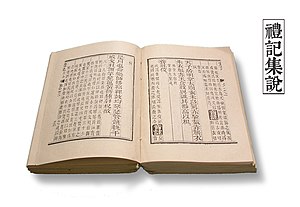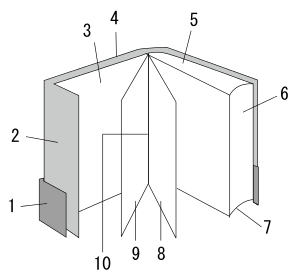Page footer
This article needs additional citations for verification. (July 2016) |
In
Desktop publishing
In desktop publishing applications, the footer identifies the space at the bottom of a page displayed on a computer or other device. Some software automatically inserts certain information in the footer, including the page number and the date and time of creation or editing the document, data which can be removed or changed. If desired, the user can add a logo or company name, the name of the author, title or other useful information (links, copyright, addresses, phone numbers, etc.) The footer is sometimes duplicated over all of the pages in the document, with the page number increasing accordingly. Similarly, this duplication is sometimes applied to the header.
Webpages
In HTML, the footer is a sectioning element, and if used is most often used for copyright information or author information. It is sometimes in a separate style to the rest of the webpage, achieved using CSS.[1]


